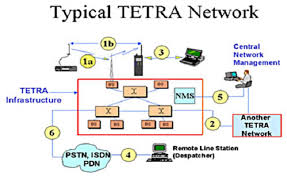Understanding 5G NSA Option 3x Call Flow: A Complete Guide
telcomatraining.com – The advent of 5G technology has revolutionized mobile communication, enhancing speed, reliability, and connectivity. Among various deployment options, 5G Non-Standalone (NSA) Option 3x is one of the most commonly implemented architectures. This guide provides a comprehensive understanding of 5G NSA Option 3x call flow, explaining how the connection is established and how data is transmitted between the user equipment (UE) and the network.
What is 5G NSA Option 3x?
5G NSA Option 3x is a transitional architecture that allows operators to deploy 5G New Radio (NR) without replacing the existing 4G LTE core network (Evolved Packet Core – EPC). Instead, 5G NR is integrated with LTE as an anchor, making it easier and cost-effective for service providers to roll out 5G services while leveraging existing infrastructure.
Key Components in 5G NSA Option 3x
- User Equipment (UE) – The mobile device that connects to the network.
- eNodeB (eNB) – The LTE base station that serves as the anchor.
- gNodeB (gNB) – The 5G NR base station that enhances data speeds.
- Evolved Packet Core (EPC) – The 4G LTE core network managing signaling and data.
- Serving Gateway (SGW) and PDN Gateway (PGW) – Responsible for routing user data.
- Mobility Management Entity (MME) – Handles authentication and mobility management.
5G NSA Option 3x Call Flow
Step 1: UE Registration and Initial Attach
When the UE powers on, it first attaches to the LTE network by following these steps:
- The UE sends an Attach Request to the eNB, which forwards it to the MME.
- The MME authenticates the UE with the Home Subscriber Server (HSS).
- Once authentication is successful, the MME establishes a session by assigning an IP address via the PGW.
- The eNB confirms the attachment, and the UE becomes LTE connected.
Step 2: 5G NR Secondary Node Addition
Once the UE is attached to LTE, the network checks whether 5G NR coverage is available. If so, the Dual Connectivity (DC) process begins:
- The eNB determines the UE’s capability and sends an RRC Reconfiguration Request to the UE.
- The UE measures the 5G NR signal and reports it back.
- If the gNB meets the signal quality threshold, the eNB establishes a secondary node (SN) addition request to the gNB.
- The gNB accepts and configures radio resources for the UE, officially connecting it to both LTE and 5G NR.
Step 3: Data Transmission via LTE and 5G NR
Now that the UE is connected to both LTE and 5G NR, data flow occurs as follows:
- User data is split between LTE and 5G NR to maximize throughput.
- The LTE eNB acts as the primary anchor, forwarding control-plane signaling to the core network (EPC).
- The gNB handles high-speed data transmission over the NR interface to improve performance.
- The Packet Data Network Gateway (PGW) manages IP packets between the internet and the UE.
Step 4: Handover and Mobility Management
During mobility scenarios, the UE may need to switch between LTE and 5G NR cells. This is handled by the Xn or S1 handover procedures:
- The UE detects a weaker signal in the current serving gNB and sends a measurement report.
- If needed, the network triggers a handover request to a new gNB or eNB.
- Once accepted, the UE re-establishes the connection with the new cell and continues data transmission.
Benefits of 5G NSA Option 3x
- Faster Deployment: Allows operators to roll out 5G quickly without waiting for standalone (SA) 5G core networks.
- Enhanced Speed & Capacity: Combines LTE and 5G NR bandwidth to deliver higher throughput.
- Seamless Mobility: Ensures smooth transition between LTE and 5G NR networks.
- Cost-Effective: Uses existing LTE infrastructure, reducing investment costs.
Conclusion
5G NSA Option 3x is a crucial step toward fully standalone 5G networks, offering a bridge between LTE and 5G NR. By understanding the call flow and architecture, network engineers and telecom professionals can optimize deployments and improve user experience. As the industry moves towards full 5G SA implementation, NSA 3x remains a key strategy for ensuring widespread 5G adoption with minimal disruption.







